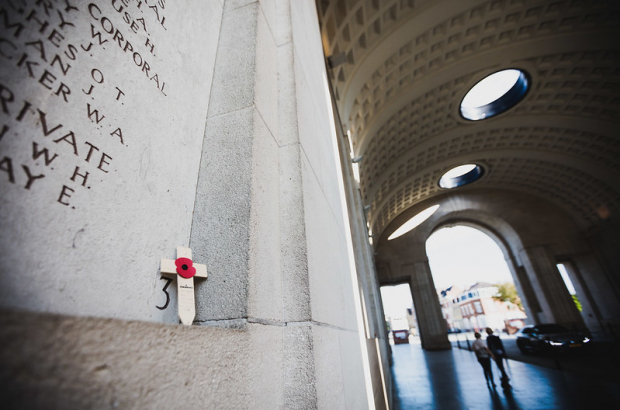- Daily & Weekly newsletters
- Buy & download The Bulletin
- Comment on our articles
Flanders Fields look to the past and the future
The First World War centenary years saw media attention around the world turn to Ypres and the battlefields of West Flanders. With that attention brought a huge increase in tourists. Had you visited in 2014, for example, you’d have been one of almost 800,000 people paying their respects at military cemeteries, listening to moving testimonies at the In Flanders Fields Museum or standing in silence for the Last Post at the Menin Gate. That’s more than double the average for the years leading up to 2014.
Numbers from Westtoer, the tourism agency for the Westhoek area, show a steep rise in visitors during the centenary – and though they have since fallen, they remain 20% higher than they were in 2012. While this brought a valuable economic boost to the area, the attention has meant something more to Ypres and its flagship museum as it looks to the future while continuing to honour the past.
“We reached out to a new audience during the centenary,” says Piet Chielens, coordinator at In Flanders Fields. “We’ve seen it at the museum for a number of years, but particularly during the centenary period, people have been coming from countries that were not at all involved in the war – South Africa, the Middle East, Israel. The media attention on the centenary provoked interest in the impact of the war. If you want to understand modern life, you need a good notion of what happened here. Not just on the battlefields, but how it shifted the existing world order.”
Rebuilding a life
Now that 2018 has been and gone, the next subjects on the agenda are the post-war reconstruction of the area and the Belgian refugees returning from France, the UK and Holland after peace broke out. Exhibitions, guided tours and hiking trails in towns from Nieuwpoort to the French border will explore the questions of not only how to rebuild a city but how to resurrect a community.
“This is something we will share with all the players in West Flanders on the former front, because everyone was confronted with the same problems,” says Chielens, who grew up in a small village near Ypres, fascinated by the foreign names on graves in the surrounding cemeteries – a fascination that still informs his work here today. “How do you turn a former battlefield back into fertile agricultural land, which was so vital to the local economy before the war? How do you regain your infrastructure, your housing or your monuments?”
The project, called Phoenix, begins in March and is backed by Visit Flanders and the region’s department of foreign affairs, which are contributing €500,000. “We will continue to support memorial tourism in the coming years,” says Visit Flanders CEO Peter De Wilde, “because we are convinced that Flanders must continue to tell the story of the First World War. It’s a story that connects people across the whole world with each other and with our region.”
The issue of refugees, however, is one the museum will be tackling by itself. Chielens hopes the ambitious research carried out by his team of volunteers will mean that in a few years' time, someone will be able to visit the museum and find out exactly where their family fled to during the war, and when they returned.
“We believe it’s a very important subject and it’s one of those stories that was not talked about, it didn’t have such a long life as the stories of the returning soldiers,” he says. “How families became refugees, returned and how difficult it was to rebuild their lives, in a lot of families this has been forgotten.”

Another effect of the centenary attention is people’s willingness to share family items with the museum, realising their significance in telling both local and universal stories. On Chielens’ desk sits an old wooden chest, rescued from the attic of a nearby home and recently donated. The owner hadn’t realised their family had packed their whole life into it when they were forced to flee Belgium for the south of France. It will become the first item in the museum’s new exhibition next year.
“This is partly how museums widen their view, from a military understanding of the events – which will always be important – to understanding how wars affect everybody in society,” he explains. “You cannot just be a bystander, you have to take part in one way or another. Even by not taking part you are part of the process. That has become part of how we address this period, and that’s why it’s becoming more and more interesting.”
Politics may also play a role in what happens here in the immediate future, with one in three visitors from outside Belgium coming from Britain and many having direct family links with the men commemorated here.
“People with personal connections keep coming back, it’s something dear to them,” Chielens says. “Even now, they might be the first in a family to come and visit a grave, and it’s very emotional, relating to a person and a generation they’ve never known. Brexit won’t affect their relationship with the history, with the war itself – but it may affect the pure economic basis on which people can travel.”
Photo: Top © Visit Flanders; Centre © In Flanders Fields Museum


















